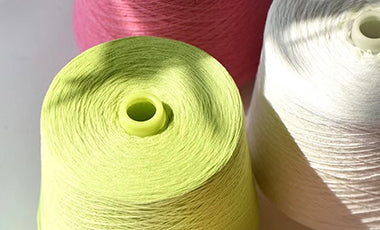When you hear the words superfine wool, you might imagine something impossibly soft—almost too delicate to touch. But what does it really mean? In the world of yarn, “superfine” is more than just a feeling—it’s a technical term with a history, a science, and a craft behind it.
The Measure of Fineness
Wool fineness is measured in microns—one micron being one-millionth of a meter. The lower the micron count, the finer (and softer) the fiber feels. Superfine wool usually falls between 17 and 18.5 microns, fine enough to feel smooth against bare skin. At this level, each strand is almost like silk in its drape, yet retains wool’s natural warmth and resilience.
Why Superfine Matters
Superfine wool isn’t just about softness—it’s about versatility. These fibers can be spun into lighter, more fluid yarns that are perfect for garments worn close to the skin: shawls, sweaters, baby clothes. They also take dye beautifully, capturing nuanced shades and complex tones that coarser fibers can’t quite hold.
From Mill to Maker
At That Yarn, we treat superfine wool as part of our curated yarn collection—often sourced as luxury surplus yarn or mill ends from fine knitwear production. These cones carry not only exceptional quality but also a quiet sustainability: using what was already made, and making it yours.
How to Work with Superfine Wool
-
Needle size: Smaller needles preserve the fabric’s lightness and structure.
-
Gauge swatches: Superfine wool blooms after washing—always swatch and block before deciding on gauge.
-
Mixing textures: Pair with silk, mohair, or alpaca for depth and softness.





